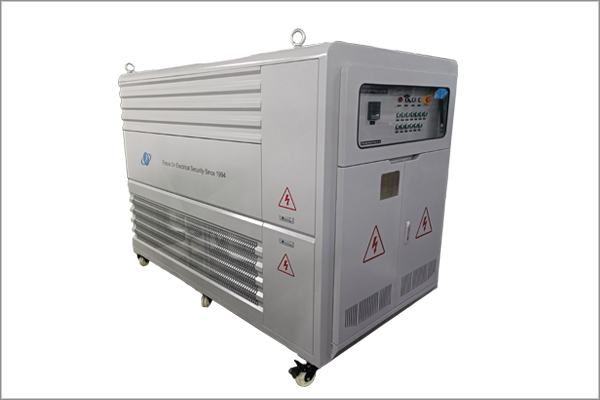In modern data centers and critical power systems, uninterruptible power supplies (UPS) play a vital role in ensuring the continuity and stability of power supply. To verify the performance and reliability of UPS, load bank testing has become an indispensable method. However, load bank testing is not simply a matter of connecting and running; it requires strict adherence to a series of precautions to ensure the accuracy and safety of the test.

1000kW load bank
I. Pre-Test Preparation
Select the appropriate load bank: The load bank's power capacity, voltage rating, and load type (resistive, inductive, capacitive) must match the UPS under test. A load bank that is too small cannot fully test the UPS's load capacity, while one that is too large may damage the UPS.
Familiarize yourself with the equipment manuals: Carefully read the operation manuals of the UPS and load bank to understand the equipment's functions, parameters, interfaces, alarm information, etc., to avoid misuse.
Check equipment status: Before testing, conduct a comprehensive visual inspection and functional test of the UPS and load bank to ensure the equipment is in good condition.
Develop a test plan: Based on the test objectives and the UPS's specifications, develop a detailed test plan, including load steps, duration, recorded parameters, etc.
Prepare safety measures: The test site should be equipped with necessary safety equipment, such as insulated gloves, safety shoes, fire extinguishers, etc., and safety warning signs should be set up.
II. Testing Process
Connect the circuits correctly: Strictly follow the wiring diagram to connect the UPS, load bank, and test instruments, ensuring the connections are secure and reliable to avoid loose connections, short circuits, etc.
Gradually increase the load: According to the test plan, gradually increase the load and closely monitor the UPS's operating status, including output voltage, current, frequency, temperature, and other parameters.
Record test data: Use professional test instruments to record the UPS's operating data under different load conditions, providing a basis for subsequent analysis.
Pay attention to abnormalities: During the test, if the UPS exhibits abnormal noise, overheating, alarms, etc., immediately stop the test and investigate the cause.
Avoid overload operation: The load applied by the load bank must not exceed the UPS's rated capacity to avoid damage caused by overload operation.
III. Post-Test Procedures
Gradually reduce the load: After the test, gradually reduce the load to avoid sudden power outages that could impact the UPS and connected equipment.
Organize test data: Organize and analyze the test data, evaluate the UPS's performance indicators, and generate a test report.
Restore the site environment: After the test, promptly disconnect the wiring, restore the site environment, and perform equipment cleaning and maintenance.
IV. Other Precautions
Ambient temperature: Load bank testing should be conducted at an appropriate ambient temperature to avoid the impact of high or low temperatures on the test results.
Ventilation and heat dissipation: The load bank generates significant heat during operation, so ensure the test site is well-ventilated to prevent equipment overheating.
Professional operation: Load bank testing should be performed by professionals; non-professionals should not operate the equipment to avoid hazards.
Conclusion
Load bank testing is an important method for verifying UPS performance and reliability, but it requires strict adherence to relevant precautions to ensure the accuracy and safety of the test. Through standardized testing procedures and professional operation, the operating status of the UPS can be effectively evaluated, providing a guarantee for the stable operation of the power system.
 2024-09-11
2024-09-11 2023-04-21
2023-04-21 2023-04-06
2023-04-06 2022-05-05
2022-05-05 2022-05-05
2022-05-05

